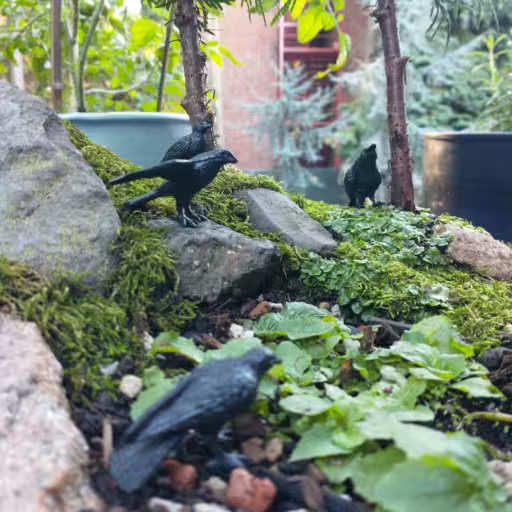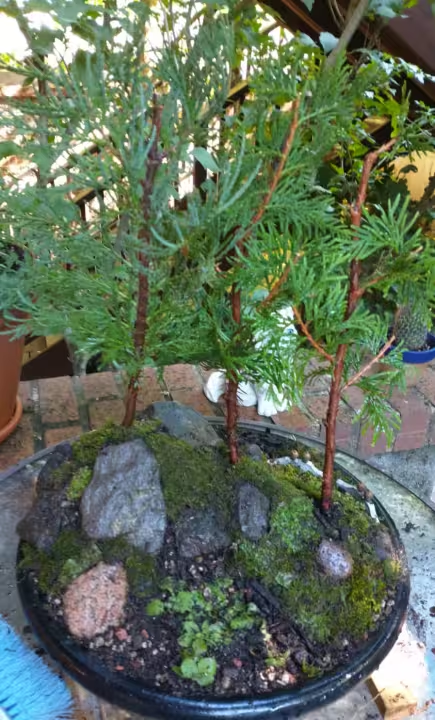My journey into this living art form began when I was at my local nursery and saw a display. A wide and shallow bowl contained a small scene; a miniature landscape, with rocks making stairs that lead down a path into the distant trees. A large rock gave the appearance of a mountain in the distance. The small trees reminded me of bonsai, which had been in my limited experience the only word I knew for these diminutive trees. I knew then that I wanted to try making one for myself.
I remember seeing these little trees in the nurseries I was taken to when I was a child. I remember being captivated with them, at first not believing that they are in fact real, living trees. The cutesy, curvy, and curly shape of the branches, and the perfectly manicured leaves had an aesthetic that appealed to me.
Penjings, however, differ from bonsai in a few key ways. Bonsai is more minimal in appearance, typically features just one tree, usually of a Japanese variety, and does so as to show what is in my opinion a perfect specimen. Beautiful and expertly trimmed, bonsai represent the very best of what a tree can be, in a miniature capacity.
A penjing, on the other hand, is a display of one or many trees as well as other plants to create a miniature landscape, and like nature, often contains a few imperfections. Entire landscapes are sculpted, which can include tall mountains, rivers, and islands. Some penjings even feature waterfalls!
When I decided to make one of my own, I thought that I would do something that would grow well in the pacific northwest: native pacific northwest varieties! I settled on two western red cedars and a solitary incense cedar as the two tree types. Yellow monkey flowers and Alaskan fern would round things out with a couple of non-tree plants. Miniature walls and crows would end up finishing the look.
I snagged a saucer from a local pottery store’s discount rack. It had a small crack that is hardly noticeable once I put a few coats of black spray paint on it. There were four holes already drilled into the saucer that I could run wire through in order to tie down my trees, as well as provide the landscape with proper drainage. I covered the holes with a small piece of window screen so that the bonsai soil would be retained during watering.
I wanted one tree to be placed on more of a ‘hill’ than the other two, so I made a mound and surrounded it with rocks. Finding the rocks was actually one of the most enjoyable parts of this whole process. I went on many walks throughout my neighborhood and nearby parks looking for suitable rocks to place in my penjing. With the trees tied down, I covered the roots with bonsai soil, then topped the whole thing off with moss I collected from around my backyard. Water was liberally applied from a spray bottle both before and after the moss was layered on.
When everything was in the ground, so to speak, I decorated the landscape with some small wall miniatures I had found, as well as four crows that my dear sister Lydia bought for me on my birthday. Miniatures and figurines are another aspect that differentiate penjing from bonsai.All in all, the time spent during the building phase of the penjing took but a fraction of the time it took to gather the trees and planters. Everything didn’t even happen all at once; I planted the trees and the yellow monkey flower, then weeks later added the crows. I just finished adding the fern this past week. Throughout the whole process I have had to make minor repairs here and there, and I think I will start wire training the trees next.
Enjoy the journey! Patiently await the new growth.

